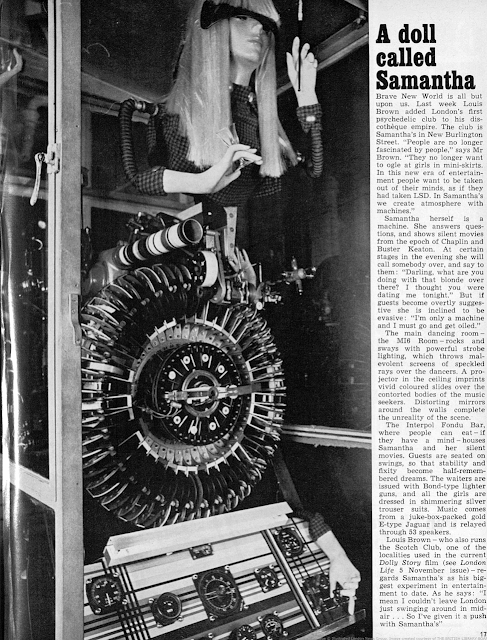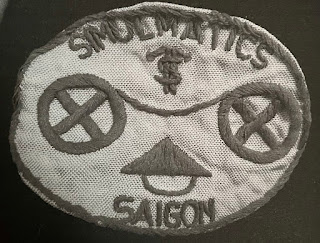Last week in Iowa, Michele Bachmann launched her bid to become the Republican candidate in the nex US presidential election. On the Tea Party far right of American politics, she has a long, lamentable history of anti-gay and anti-abortion activism not to mention
whitewashing the history of slavery.
As she made her way to the podium in Waterloo at the weekend
'Elvis Presley's Promised Land belted out'. Well the notion of manifest destiny and Americans as the new chosen people is a hardy right wing trope, and at one level there is a connection between the idea of the Promised Land and the American frontier.
But we cannot leave the Promised Land in the hands of US Conservatives. The name itself derives of course from the Book of Genesis where God promises Moses the land of milk and honey, not a metaphysical utopia but the actual land of Israel. Over the millennia that tribal foundation myth of a people in the prehistoric Middle East has taken on a universal appeal, holding out the hope of a better world somewhere, some place, some time
It's hardly suprisizing that Bachmann chose Elvis Presley's version of the song, rather than the original by its black songwriter. When Chuck Berry sings it there is no doubt that the songs works on at least two levels. On the surface it is simply a description of a journey from Norfolk, Virginia to California, part of the 1950s/early 1960s mythologisation of travelling across the USA (Route 66, Highway 61, On the Road).
But at another level, the journey retraces a moment in the mass migration of black people from the segregated Southern states. Surely it can't be a coincidence that he 'bypassed Rock Hill' where in
1961 Freedom Riders had been beaten for fighting against racism on Greyhound buses. And at the time Berry was writing the song in prison in 1962/63 Birmingham, Alabama was the front line of the civil rights movement - no wonder the narrator can't get away quick enough once 'stranded in downtown Birmingham'.
A few years later, Martin Luther King brought the Promised Land into the heart of the struggles of the period. In his final speech in 1968 during the
Memphis sanitation workers strike, King famously declared: 'I don't know what will happen now; we've got some difficult days ahead. But it really doesn't matter with me now, because I've been to the mountaintop... And I've looked over, and I've seen the Promised Land. I may not get there with you. But I want you to know tonight, that we, as a people will get to the Promised Land'. The next day he was murdered.
It is this semi-utopian Promised Land that Joe Smooth (and Anthony Thomas) sings of in the early Chicago house classic: 'Brothers, Sisters, One Day we will be free. From Fighting, Violence, People Crying in the Streets... as we walk, hand and hand, sisters, brothers, we'll make it to the promised land'
In Bruce Springsteen's take on this, from the 1978 album Darkness on the Edge of Town, the Promised Land features only as a hazy image of a better life. The singer professes 'I believe in the Promised Land' but he is unclear about what or where this is. It is simply the negation of a life spent 'Working all day in my daddy's garage', a place that can seemingly only be reached on the other side of the destruction of all that stands:
'I've done my best to live the right way
I get up every morning and go to work each day
But your eyes go blind and your blood runs cold
Sometimes I feel so weak I just want to explode
Explode and tear this whole town apart
Take a knife and cut this pain from my heart...
Gonna be a twister to blow everything down'.
(see also Springsteen's Thunder Road with its line 'Oh-oh come take my hand, Riding out tonight to case the promised land').
In its Rastafarian and Garveyite inflection, the Promised Land is firmly located in Africa. Dennis Brown's 1979 song, produced by Aswad, pictures Africa as a land of abundance and freedom: 'There's plenty of land for you and I, By and By, Lots of food to share for everyone, no time for segregation in the Promised Land'.
Dennis Brown's song is the starting point for last year's 'Land of Promise' by Nas and Damian Marley. This is a track that bring the Promised Land song cycle full circle, dropping the names of American states just like Chuck Berry but comparing them to African places: 'imagine Ghana like California... Lagos like Las Vegas'.
Speaking
from Africa, Nigerian reggae singer Majek Fashek wonders whether the Promised Land is to be found anywhere in the world as it stands: 'Promised Land is not America, is not Asia, Promised Land is a state of mind, Promised Land is a state of mind, Promised Land is not Europia, is not Africa, Promised Land is a state of mind, Promised Land is a state of mind':
So Michele, leave the Promised Land well alone. You wouldn't recognise it if you found it.
(OK just one more... I love Johnny Allan's 1971 cajun verson of Berry's song, which I always associate with the late great
Charlie Gillet thanks to whom I first heard it)










































